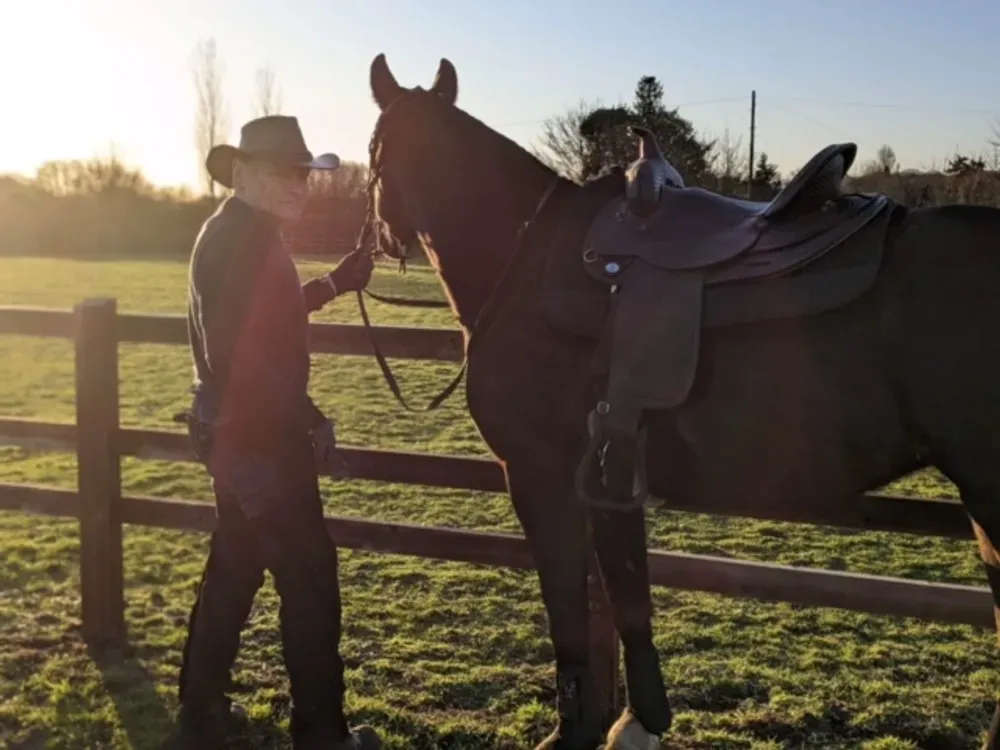
Table of Contents
Cracking the Code: The Basics of Horse Body Language
Imagine having conversations without words, conveying emotions, intentions, and thoughts through subtle movements and gestures. Horses have mastered this art, using their bodies to communicate with incredible precision. By deciphering their cues, you can establish a deeper connection and build mutual trust. Here are the 4 parts of your horse's body language.
1. Ears Speak Volumes: A horse's ears are like radar, constantly swivelling to capture sounds and emotions. Forward-pointing ears often indicate curiosity and attentiveness, while pinned-back ears signify irritation or aggression. A relaxed horse has ears halfway way between being pinned and being erect. If your horse is listening carefully to you as its trainer his ears will be directed at you. In the saddle, you will notice this when riding on the bit and expecting your horse to give you 100% attention. This is when horses direct their ears slightly towards the rider. When you are attempting Monty Roberts joinup and the horse reaches the point when he is ready to join up his ear nearest to you will be focussed on you and he will lower his head. So learning to read your horse's ear movements can provide valuable insights into its emotional state.
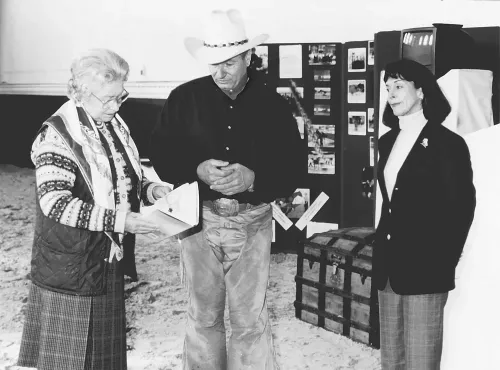
Article Suggestion
Monty Roberts: Revolutionising Horse Training Through Join-Up2. The Power of the Tail: A horse's tail is a versatile instrument of expression. A relaxed, swaying tail generally indicates contentment, while a tightly clamped tail signifies anxiety, fear or pain. Pay attention to the speed and rhythm of tail movements because a fast twitching tail indicates frustration and annoyance. A tail carried high is indicative of excitement and a “look at me attitude”. A mare in season will frequently carry its tail slightly higher than normal for that particular horse and often it will be placed slightly to the side. So observe your horse's tail movements to grasp insight into their feelings.
3. Eyes, the Windows to the Soul: Horses are known for their expressive eyes. Soft, half-closed eyes often reveal relaxation and comfort, while wide-open eyes may suggest alertness or tension. Gaze direction is equally important; a fixed gaze could indicate focus while rolling eyes might imply distress. A horse that shows the whites of its eyes (unless this is normal for the horse) is highly stressed and anxious. Many horses being ridden harshly with strong bits show the whites of their eyes. and are clearly stressed. At the other extreme horses that have large open eyes are frequently bold and kind.
4. Position and Movement: The way a horse positions its body in relation to you and its surroundings speaks volumes. Leaning in when being led can signal trust, while sidestepping when being ridden or led generally indicates hesitance. Additionally, observe the horse's movements – playful leaps reflect joy, while stomping could denote frustration. In the field turning and running away while kicking out is a sign of excitement and trying to control the situation. A horse that turns its back on you in the stable or field is communicating that they do not want to be caught.
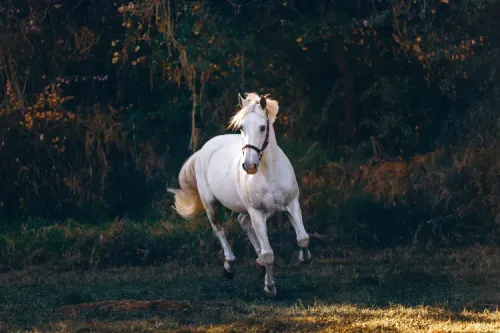
Article Suggestion
My Horse is Hard to CatchPeering further into Equine Psychology
Understanding your horse's thoughts is only as good as your responses to their unspoken language. You must sensitively establish leadership and permit your horse to build trust. Remember, horses are prey animals, naturally cautious of potential threats and you are a natural predator with forward-facing eyes. So your horse must learn to treat you as a member of the herd rather than as a threat. Even if you only have two horses you will effectively have a herd and both horses must regard you as the herd leader. Remember that interactions within a herd hierarchy are vital to your horse's well-being.
You must develop three skills.
Effective communication because your horse has limited verbal communication skills body language is their primary mode of communication. Teaching your horse to respond appropriately to your cues enhances your ability to convey your intentions, making training and riding smoother and more effective. A simple example of this would be when you want to pick out your horse's feet. You run your hand down your horse's leg and lean against its shoulder or quarters depending on whether it is a front or back leg. Your horse takes this as the cue to raise the leg for you. After a few sessions, this process can also be reversed. Lean against the horse's shoulder and wait for him to adjust and shift his weight before you move down to lift the leg which will then be lifted as you ask for it.
Emotional Connection because just like humans, horses experience a wide range of emotions. When you can recognise signs of anxiety, contentment, excitement, or discomfort, you become attuned to their emotional well-being. This paves the way for a more profound emotional connection. For example, the anxious horse will show anxiety through the tensing of muscles (which is part of the flight response to danger) and will have an anxious expression. This horse needs reassurance. However, the wilful horse will not want to do something because it does not want to. This horse does not need reassurance but does need a firm hand.
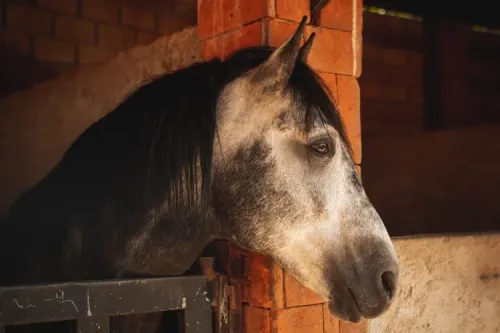
Article Suggestion
Know the difference between an Anxious and a Wilful HorseProblem-solving as unusual behaviour or sudden changes in your horse's demeanour might indicate an underlying issue. So interpreting their body language enables you to identify problems early, potentially preventing discomfort or injury. For example, the horse that is rolling with an anxious expression might be suffering from life-threatening colic. The horse that puts its ears back when the saddle is put on its back could be sore due to a bridging saddle.
Here is a list of some Horse Behaviours for you to Understand
Ears Forward: When a horse's ears are pointed forward, it usually indicates that the horse is alert and attentive, possibly interested in something in its surroundings.
Ears Pinned Back: Pinned-back ears can signal irritation, aggression, or discomfort. It's essential to approach with caution in such cases.
Snorting and Blowing: Snorting and blowing are often signs of relaxation. Horses might do this after a good workout or when settling into a comfortable environment.
Pawing: Pawing the ground can indicate impatience, frustration, or boredom. Horses might paw when tied up, waiting, or standing in a stall.
Tail Swishing: Tail swishing can have various meanings. A gently swishing tail might indicate mild annoyance, while vigorous tail swishing might signal irritation or discomfort.
Rolling: Horses love to roll in the dirt or mud, not just to get dirty but also to scratch itchy spots and promote blood circulation.
Head Tossing: Head tossing can indicate discomfort, often related to ill-fitting tack or physical issues like a sore back or mouth.
Lip Curling: Also known as flehmen response, horses curl their upper lip to trap scents in a special olfactory organ. This behaviour is commonly seen when they encounter new or interesting smells.
Nipping and Biting: Nipping can be playful or a sign of dominance. Biting, on the other hand, can be aggressive or a reaction to pain or irritation.
Kicking: Kicking can be defensive, playful, or aggressive. Horses might kick to establish dominance, communicate with other horses, or ward off perceived threats.
Pinned Tail: A tail pressed tightly against the body can indicate fear or discomfort. This is often seen in horses that are anxious or stressed.
Nuzzling and Grooming: Nuzzling and grooming behaviour is a sign of bonding and social interaction among horses. Horses might nuzzle humans they feel close to as well.
You scratch my back and I'll scratch yours!
This saying comes from observing horses where they will scratch each other's necks and wither areas. If you bond with your horse they often try to scratch you if you vigorously scratch their wither area.
Whinnying and Neighing: Whinnies and neighs are vocalizations that horses use to communicate over distances. They can indicate excitement, separation anxiety, or simply a greeting.
Head Lowering: Lowering their head is a sign of relaxation and submission. Horses might do this when they're feeling comfortable and at ease.
Rearing: Rearing involves a horse standing on its hind legs. It can be a sign of excitement, frustration, or a response to being startled.
Pacing and Circling: Pacing and circling might indicate restlessness or anxiety. Horses might exhibit this behaviour when they're confined or anxious.
Flicking Tail: A flicking tail can indicate annoyance with flies or other insects. Horses often use their tails to swat away bothersome pests.
Yawning: Just like in humans, yawning can indicate fatigue or relaxation. Horses might yawn after a good workout or when they're ready to rest.
The take-home Message
Horses have a lot to say, and their bodies are their voices. Learning their language is an ongoing process, but the rewards are immeasurable. Through understanding their body language, you're not only creating a strong foundation for effective communication but also embarking on a journey of companionship that's built on trust, respect, and an unspoken understanding. So, take the time to listen – the language of horses is waiting to be heard.
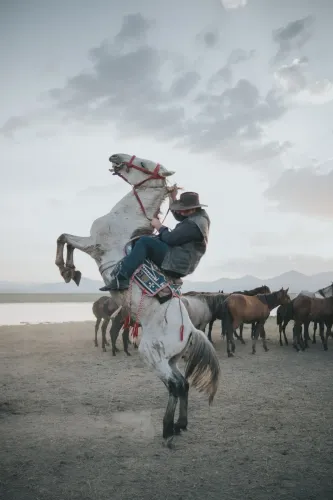
Article Suggestion
Know 5 Reasons causing your Horse to Nap and Safely Sort the Problem
